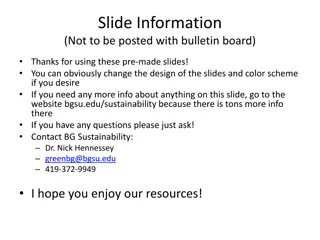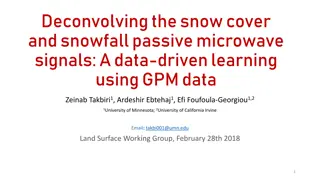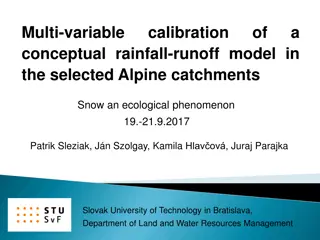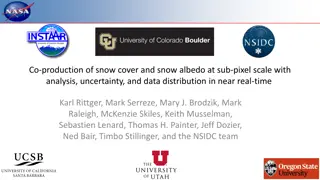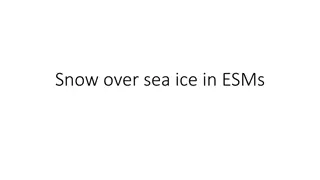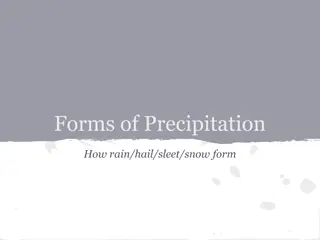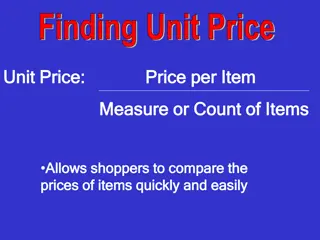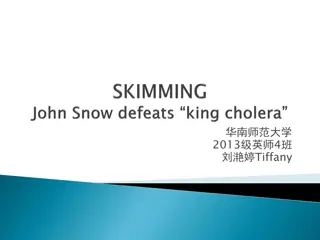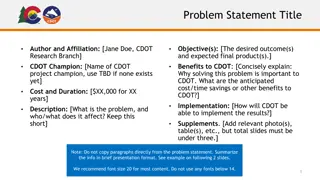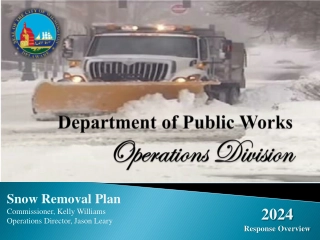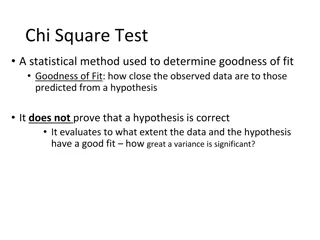Comparing pH and TDS Values in Snow Melt, Tap Water, and Bottled Water
Analysis of pH and Total Dissolved Solids (TDS) values reveals differences between snow melt, tap water, and bottled water. The study hypothesizes and confirms that pH and TDS vary across the water sources. Materials and procedures used to collect and assess samples are outlined to ensure accurate data. Average pH and TDS values are calculated, highlighting the distinctions between the water sources. Potential sources of error and avenues for future research are also discussed.
Download Presentation

Please find below an Image/Link to download the presentation.
The content on the website is provided AS IS for your information and personal use only. It may not be sold, licensed, or shared on other websites without obtaining consent from the author. Download presentation by click this link. If you encounter any issues during the download, it is possible that the publisher has removed the file from their server.
E N D
Presentation Transcript
Comparing Quality of Snow Melt, Tap Water, and Bottled Water Isaac Royalballs, Mick Geong, Mikhail Saloopy, Gabe Corona
How do pH and TDS (Total Dissolved Solids) values differ in snow melt, tap water, and bottled water?
Independent Variables Top snowmelt (collected from 0 cm to 10 cm deep) Middle snowmelt (collected from 30 cm to 40 cm deep) Storm layer snowmelt (collected from storm layer of snow) Tap water from Lake Angela Bottled Water (Arrowhead)
Hypothesis pH(bottled water) < pH(tap water) < pH(snowmelt) pH(top) < pH(middle) < pH(storm layer) TDS(snowmelt) < TDS(bottled water) < TDS(tap water) TDS(top) < TDS(middle) < TDS(storm layer)
Materials Glass containers(erlenmeyer flask or glass bottle) One Bottle of Bottled Water Snow samples from different depths Sample of tap water Ceramic mug pH meter (Ohaus) TDS meter (Dr. Meter) Snow Shovel
Procedure 1. 2. Dig a pit using a snow shovel. Before collecting a snow sample, coat the glass container using snow from the specific layer. Collect snow sample without putting anything else than snow into the glass container. Repeat these step for top, middle, and storm layer snow samples. Bring the containers indoor and let them melt. Once the snow samples are completely melt, use a pH meter and a TDS meter to evaluate and record their pH and TDS values. Pour bottled water and tap water into ceramic cups and replicate step #6. Repeat procedures #1 to #7 3. 4. 5. 6. 7. 8.
pH Average Psnow, tap=0.1991 Ptap, bottled=0.002 Pbottled,snow=0.1696
TDS Average Psnow, tap=0.0001 Ptap, bottled=0.0001 Pbottled,snow=0.0001
Sources of Error Inconsistent snow samples Varying testing vessels Cross Contamination
Future Research What is added to bottled water to have such a high TDS? What are the impacts of high TDS?
Conclusion pH(tap water) < pH(snowmelt) < pH(bottled water) pH(middle) < pH(top) < pH(storm layer) TDS(snowmelt) < TDS(tap water) < TDS(bottled water) TDS(top) < TDS(storm layer) = TDS(middle)


